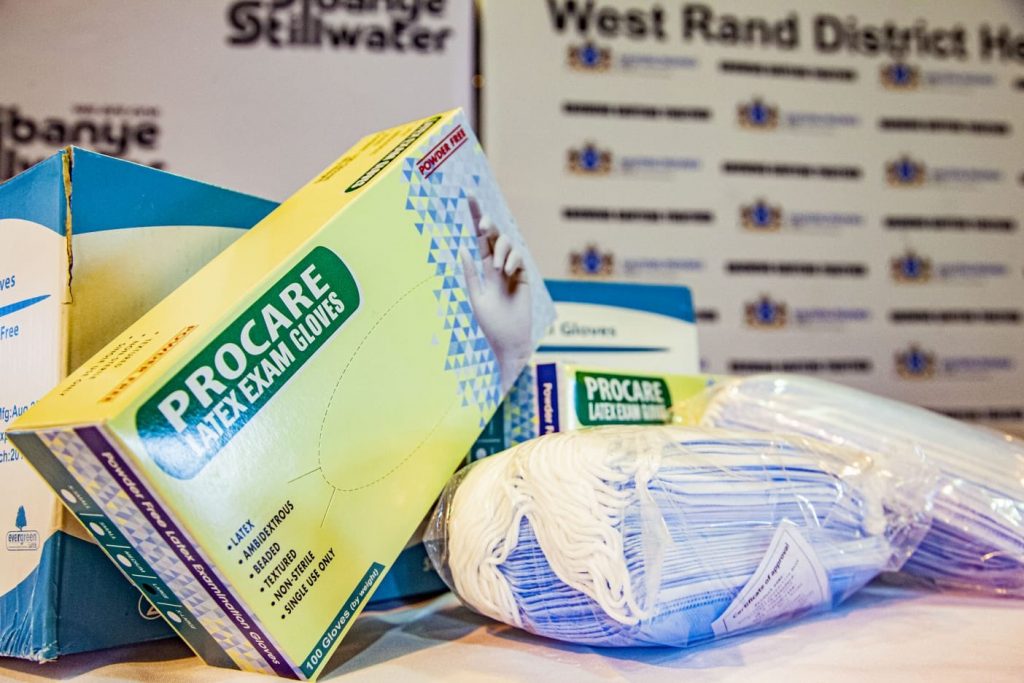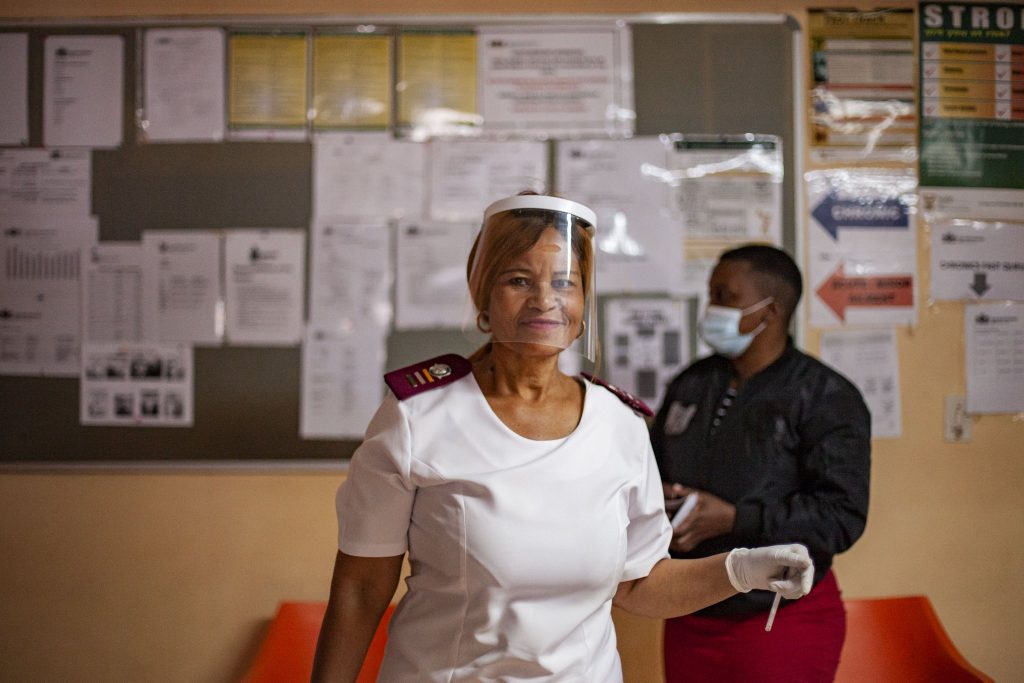Community healthcare workers have become what some have called our “heroes on the ground” during COVID-19. By keeping more people healthier for longer, and increasing productivity, these workers could save South Africa more than R400-billion over 10 years. The question is, when will the country recognise them as integral and pivotal players in the health system?
COMMENT
South Africa’s national shutdown has bought the country precious time to prepare for an inevitable rise in COVID-19 cases once lockdown restrictions ease. Presently, the majority of planning has centred around ensuring the country has enough hospital beds, staff and equipment to treat COVID-19 patients.
The national health department has also rolled out large-scale screening, testing and tracing programmes using clinics, community healthcare centres and mobile testing units.
All three rely on community-level services delivered by community healthcare workers (CHWs).
Lessons from Ebola: ‘Our CHW was determined. He stood up and said he grew up among us and so we should not fear him’
When Ebola hit Liberia in 2014, the virus spread quickly and, as in many countries, the already weak health system buckled under the strain of the crisis. Child and maternal health programmes faltered. In some cases, healthcare workers — without clear guidance from above — actively turned pregnant women away, reveal authors in a 2015 letter published in The Lancet.
But two years prior to the outbreak, three counties in Liberia had invested in CHW-led projects to improve primary healthcare services in hard-to-reach communities.
And during Ebola, it paid off.
Amidst the outbreak, CHWs continued to deliver life-saving services — particularly for children, 2017 research published in the BMC Public Health shows.
The number of people CHWs treated fell, at least in part, because “no touch” policies to prevent Ebola transmission meant workers referred more cases to health facilities. But they continued to provide essential care for conditions such as childhood pneumonia and diarrhoea, argue researchers, ultimately making communities more resilient. This was especially the case when CHWs received clear service directives, were well-trained and had the medicines they needed.
But countries such as Liberia, Sierra Leone and Guinea also recruited more and sometimes better-paid health workers during Ebola to conduct community-level activities. Research from these countries published in 2018 in the Journal of Global Health found communities often distrusted new employees — at times, violently so. In contrast, CHWs were better trusted and more easily able to incorporate Ebola into regular information and screening campaigns for other conditions.
“Our regular activities on the sensitisation of maternal health and child health were not disturbed at all,” one Guinean CHW told researchers, ”because any time we go to the field, we start first the sensitisation on our malaria, pneumonia, and diarrhoea activities, then we add on the Ebola sensitisation.”
A community leader in Guinea explained:
“Our CHW was determined even during Ebola. He stood up and said he was born here and grew up among us and so we should not fear him because he would stand for us, and would not harm us in any way.
“Instead we should work together to chase out this sickness of Ebola.”
Who protects our frontline heroes?

Today, South Africa has an opportunity. Adequately resourcing and managing the country’s 55 000 CHWs would enable not only more COVID-19 testing and tracing but allow workers to integrate COVID-10 screening with that for other conditions — including those such as high blood pressure and diabetes that can lead to more severe cases of COVID-19, according to research published in the European Respiratory Journal earlier this year.
Vuyiseka Dubula and Tracey Naledi have already noted this in a recent Daily Maverick opinion piece, adding that integrated screening may also address stigma related to particular conditions.
If CHWs are to continue to play a central role in not only the fight against COVID-19 but in safeguarding access to broader services, such as maternal and child healthcare, they need support.
To our knowledge, there are no guidelines around the provision of services by CHWs in light of COVID-19 or what kind of personal protective gear — for instance masks, gloves and face shields — they are entitled to.
For years, CHWs fought for better wages and at the end of 2018, health departments standardised pay to ensure all workers received the national minimum wage of R3 500. But workers continue to lack meaningful daily support in their jobs. Partly as a result, community-based services represent less than 5% of district health expenditure in South Africa, according to an analysis of Gauteng and KwaZulu-Natal districts published in PloS One earlier this year.
And a 2018 investment case for CHWs by the Medical Research Council (MRC) estimates that South Africa needs 41 000 more CHWs to bring our national total to 96 000.
Again, as we’ve seen in Liberia and Sierra Leone, there are payoffs.
If South Africa invests in 41 000 more CHWs, it would save an additional 34 800 lives in the next decade by, for instance, improving treatment of conditions such as pneumonia, increasing childhood vaccination rates and making sure pregnant women get adequate care, shows the MRC research.
The call is not to increase the number of community health workers during these unprecedented times but rather to ensure we give the ones we currently have the best chance of success by providing crucially strong support structures — just as we strive to ensure doctors have the equipment and medicines they need to practice their craft.
In a time of limited resources, prioritising communities in the bottom two socio-economic quintiles is more important than increasing the number of CHWs. Those in the bottom two quintiles already have been shown to carry a larger burden of disease, including surprisingly for non-communicable diseases and experience higher economic vulnerabilities to access care.
But the country can only unlock these gains if healthcare workers receive standardised training, strong support and supervision and are formally integrated into the health system, the research cautions.
Doing so may help overcome challenges cited in the 2020 Plos One article, such as the low number of people CHWs currently refer to local clinics and community health centres.
Investments now pay off later — and in big ways
And the country may not be able to put these investments on hold.
Public health facilities have remained open during the COVID-19 outbreak but anecdotally we have heard repeatedly from healthcare workers that patient visits have significantly decreased across the country.
A recent Human Science Research Council study found that up to one in four people with chronic conditions reported difficulty in accessing regular medication nationally during the lockdown in informal settlements, rural areas and farms.
Declines in patient numbers could be due to a combination of factors, including patient fears of being stopped by the police as well as health workers’ reluctance to see people without adequate personal protective equipment.
But as we saw with Ebola, disruptions like these can have profound impacts. Even conservative estimates regarding reduced demand for services, access, healthcare workers and supplies during the COVID-19 outbreak in South Africa could reduce access to safe vaginal deliveries, the percentage of which could drop by five percentage points — roughly the same decrease seen in access to safe abortion and contraception, according to a recent study in The Lancet. The number of children vaccinated for tetanus drops almost 30 percentage points and declines in the treatment of life-threatening sepsis for newborns falls by about 20 points.
The COVID-19 epidemic in South Africa has seen an unprecedented national response, which compared to the international landscape, has been fast, efficient, and draws on empirical evidence, scientific data and international best practice. This leadership instils the hope that radical change may be possible and the time has come to truly shed light and address failing health and social systems, inefficiencies and enduring inequalities — including when it comes to our CHWs who need to be recognised and celebrated.

The national and provincial health departments must ensure that their own policies are more than just paper and are actually implemented — this means ensuring that all CHWs work as part of teams and have access to dedicated supervision via team leaders, ideally enrolled nurses given the shortage of professional nurses. These enrolled nurses must be incentivised and motivated to carry out critical home visits to ensure the adequacy of service provision and build the confidence of health workers. Both CHWs and team leaders need job progression opportunities. Nurses heading up CHWs teams should be supported to create strong relationships with local health facilities.
And CHWs must be kept safe, always working in pairs and being provided with adequate transport, especially in rural areas.
Lastly, we have to invest in tracking the impact of our CHWs, including creating tangible service delivery indicators and collecting referral and counter referral data.
Without these, the only thing we can do is hypothesize the potential impact of CHWs and a strongly supported primary health care structure on health in South Africa using evidence from other countries. Until the country gives the platform a fighting chance, there will always be a lack of clarity whether this is good value for money in South Africa.
But in the current economic crisis, we can’t afford but to try.
